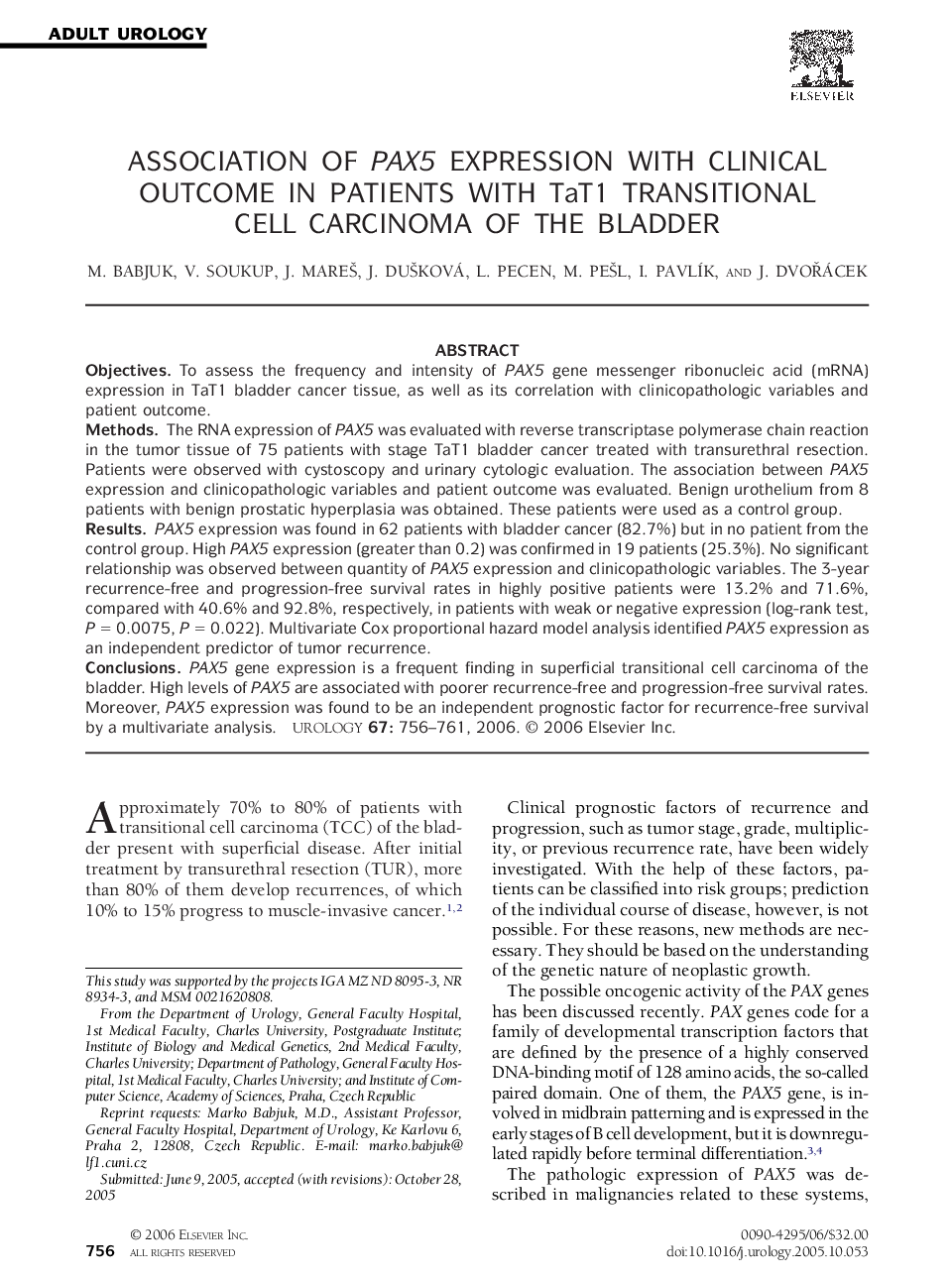| Article ID | Journal | Published Year | Pages | File Type |
|---|---|---|---|---|
| 3906923 | Urology | 2006 | 6 Pages |
ObjectivesTo assess the frequency and intensity of PAX5 gene messenger ribonucleic acid (mRNA) expression in TaT1 bladder cancer tissue, as well as its correlation with clinicopathologic variables and patient outcome.MethodsThe RNA expression of PAX5 was evaluated with reverse transcriptase polymerase chain reaction in the tumor tissue of 75 patients with stage TaT1 bladder cancer treated with transurethral resection. Patients were observed with cystoscopy and urinary cytologic evaluation. The association between PAX5 expression and clinicopathologic variables and patient outcome was evaluated. Benign urothelium from 8 patients with benign prostatic hyperplasia was obtained. These patients were used as a control group.ResultsPAX5 expression was found in 62 patients with bladder cancer (82.7%) but in no patient from the control group. High PAX5 expression (greater than 0.2) was confirmed in 19 patients (25.3%). No significant relationship was observed between quantity of PAX5 expression and clinicopathologic variables. The 3-year recurrence-free and progression-free survival rates in highly positive patients were 13.2% and 71.6%, compared with 40.6% and 92.8%, respectively, in patients with weak or negative expression (log-rank test, P = 0.0075, P = 0.022). Multivariate Cox proportional hazard model analysis identified PAX5 expression as an independent predictor of tumor recurrence.ConclusionsPAX5 gene expression is a frequent finding in superficial transitional cell carcinoma of the bladder. High levels of PAX5 are associated with poorer recurrence-free and progression-free survival rates. Moreover, PAX5 expression was found to be an independent prognostic factor for recurrence-free survival by a multivariate analysis.
